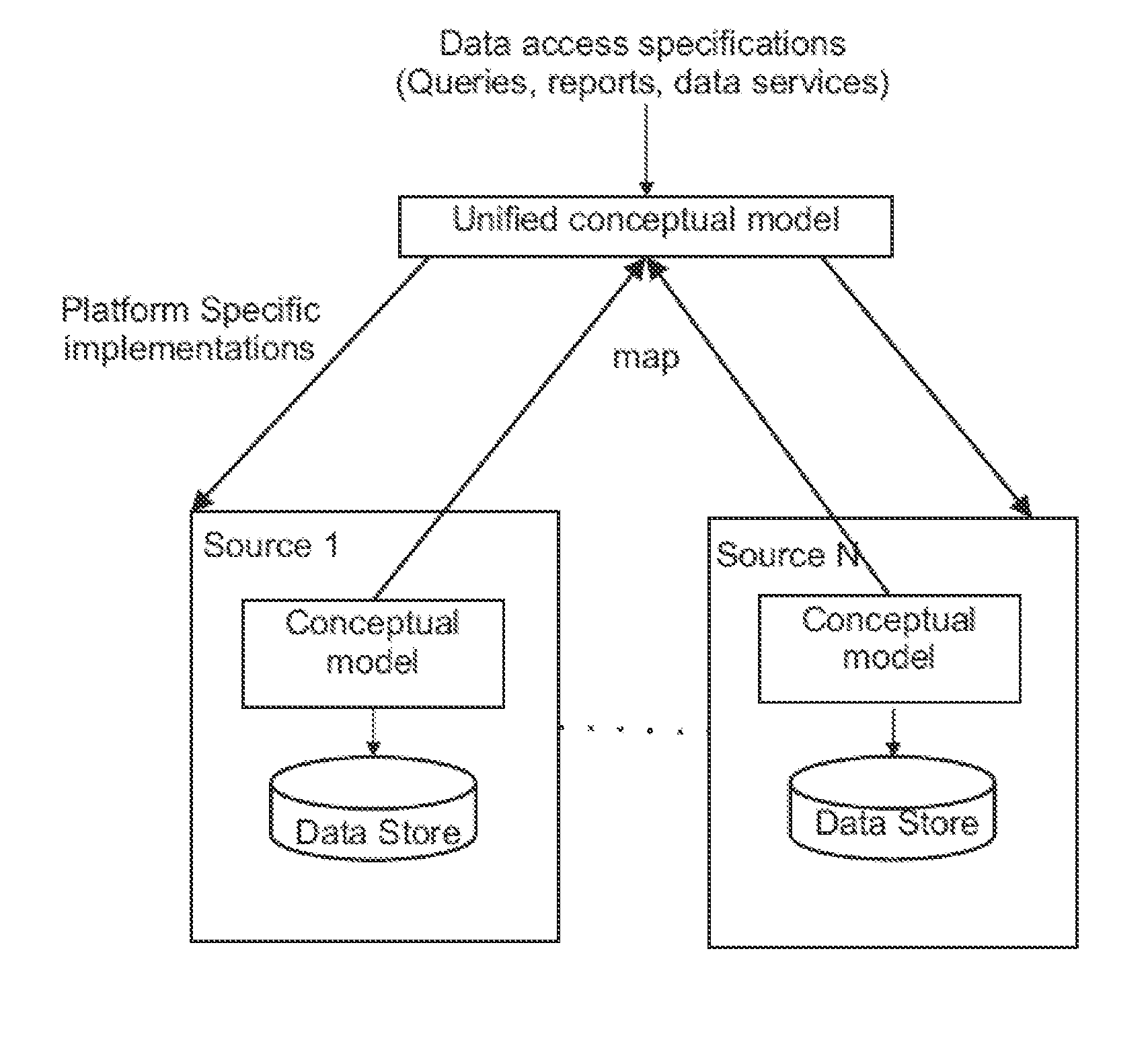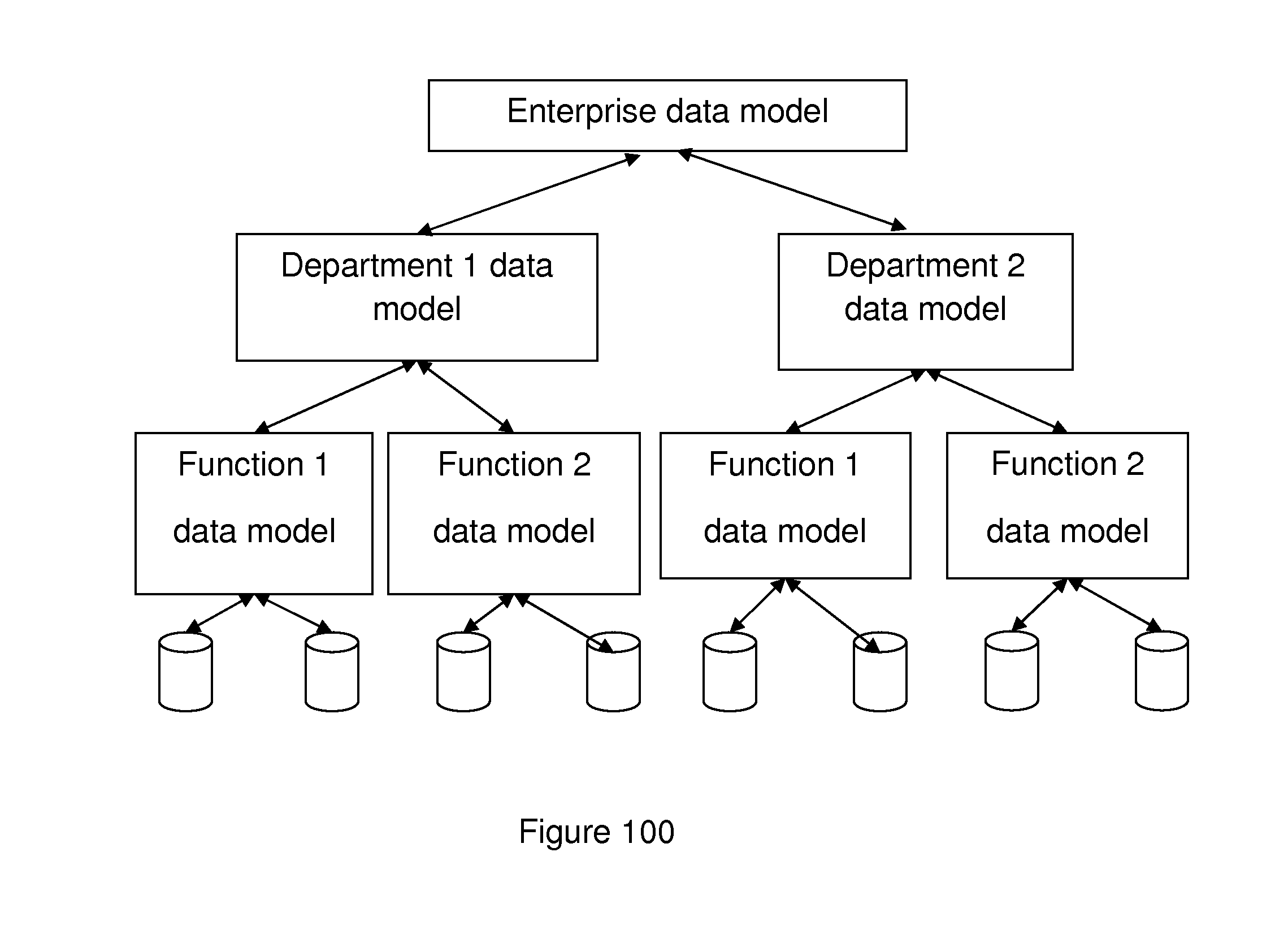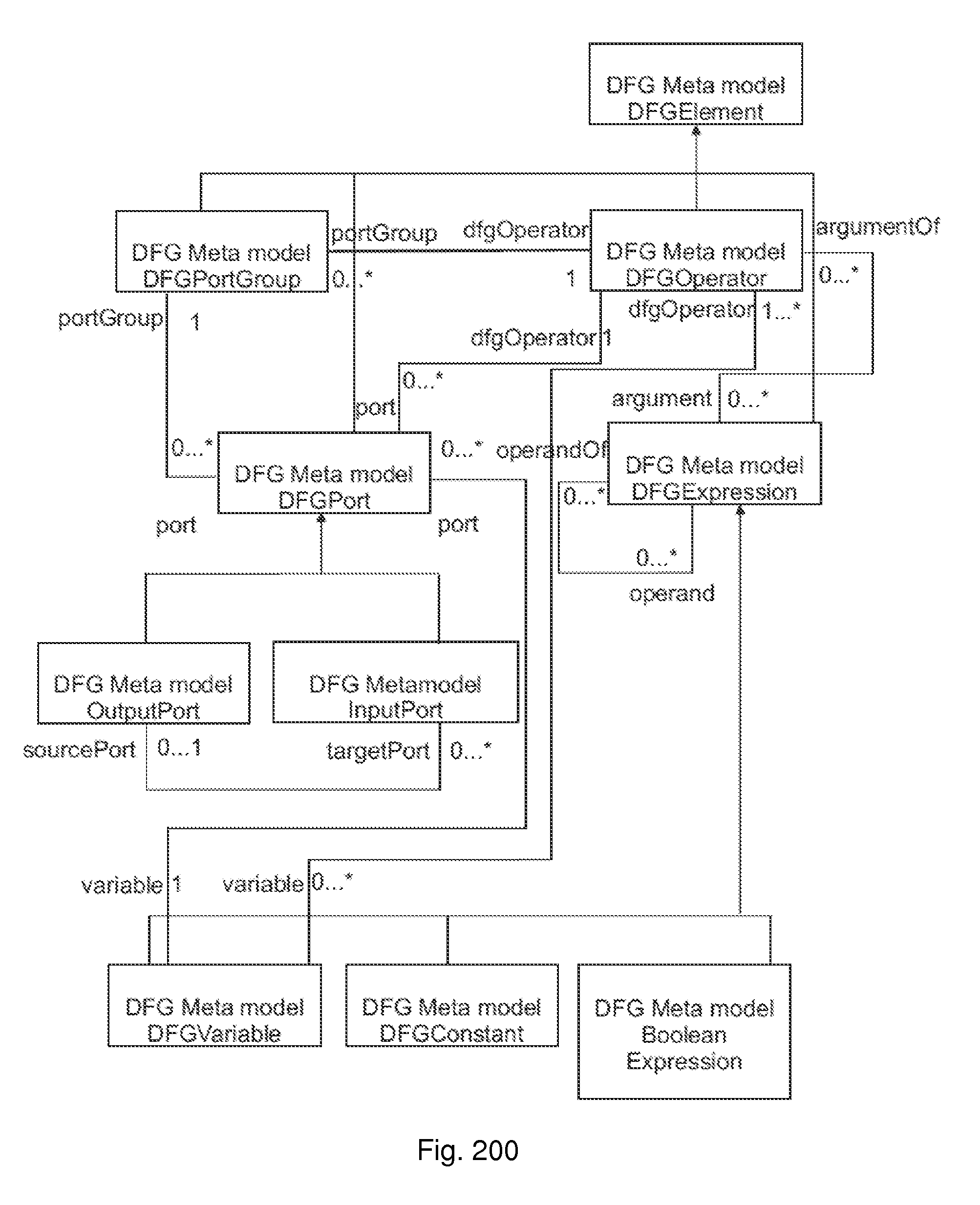Component Based Approach to Building Data Integration Tools
a data integration and component-based technology, applied in the field of data integration, can solve the problems of consuming no single technology can meet all needs, and consume a lot of effort, and achieve the effect of facilitating easy migration
- Summary
- Abstract
- Description
- Claims
- Application Information
AI Technical Summary
Benefits of technology
Problems solved by technology
Method used
Image
Examples
example 4
List the Names of Persons and Their Companies
[0075]Select p.name, p.department.company.name[0076]from Person p;
[0077]Rule 3: Path expressions are allowed in ‘select’ as well, provided they are *:1 paths. The above example is correct because the cardinalities of both the associations involved are ‘*:1’.
[0078]With regard to the above query language, it should be noted that it can be translated into an equivalent SQL format. Assuming a canonical representation where an association is stored as a relation with two columns corresponding to the two roles, path expressions can be translated to SQL format using the following rule.
[0079]Translation rule: Each association segment of a path expression, whether it occurs in where or select clause of the query, introduces two relations in the ‘from’ clause, corresponding to the association and the associated class, and corresponding join conditions in the where clause.
[0080]The above rule is elaborately discussed below using examples as shown be...
example 1
[0081]PSQL:
[0082]Select p.name, c.name[0083]from Person p, Company c
[0084]where[0085]p.department.company=c;
[0086]Equivalent SQL:
[0087]Select p.name, c.name
[0088]from[0089]Person p, Company c, Department_employee_department Person dp, Department d, Company_department_company Department cd
[0090]where[0091]dp.employee=p.id and dp.department=d.id and[0092]cd.department=d.id and cd.company=c.id;
example 2
[0093]PSQL:
[0094]Select c.name
[0095]from Company c
[0096]where[0097]c.department.employee.nationality ‘Indian’;
[0098]Equivalent SQL:
[0099]Select c.name
[0100]from[0101]Company c, Company_department_company Department cd, Department d, Department_employee_department Person dp, Person p
[0102]where[0103]cd.company=c.id and cd.department=d.id and[0104]dp.department=d.id and dp.employee=p.id and[0105]p.nationality ‘Indian’;
PUM
 Login to View More
Login to View More Abstract
Description
Claims
Application Information
 Login to View More
Login to View More - R&D
- Intellectual Property
- Life Sciences
- Materials
- Tech Scout
- Unparalleled Data Quality
- Higher Quality Content
- 60% Fewer Hallucinations
Browse by: Latest US Patents, China's latest patents, Technical Efficacy Thesaurus, Application Domain, Technology Topic, Popular Technical Reports.
© 2025 PatSnap. All rights reserved.Legal|Privacy policy|Modern Slavery Act Transparency Statement|Sitemap|About US| Contact US: help@patsnap.com



